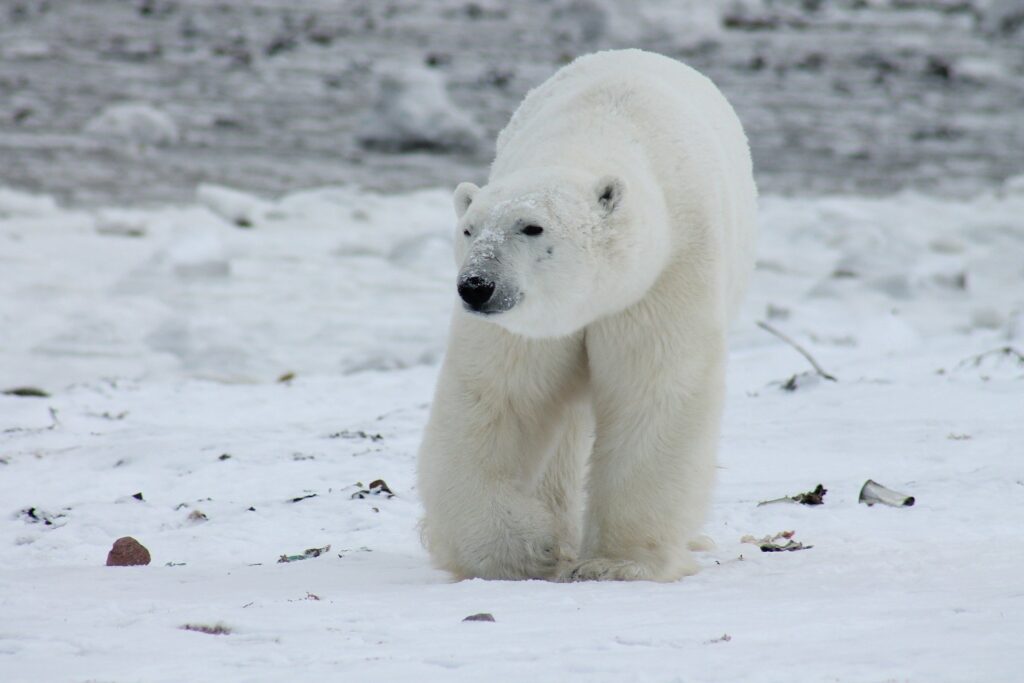The Arctic is home to a wide array of winter wildlife and therefore the polar bear is the most iconic symbol of the Arctic. Perhaps no creature sparks as much fascination as the polar bear. This majestic animal is sort of mythical in its perception and has inspiring stories and legends across the world, while also evoking much curiosity. A great white bear asleep on the Arctic may appear as nothing more than a snowbank until a black nose pokes out from underneath a coat of thick fur. And that brings us to a question here. Are polar bears black in colour?
In the eyes of the onlooker, the polar bear is roofed in a blanket of white fur. However, the hair in its heavy coat is transparent and they form two layers. The coarse outer layer is made of long tapered hair, while the dense undercoat consists of shorter insulative hair. And this double-layered coat prevents heat from escaping the body of the polar bear. Their coat is so well camouflaged in Arctic environments that it can sometimes pass as a snowdrift. Interestingly, the polar bear’s coat has no white pigment; instead, it is black and their thick layer of body fat helps to soak within the sun’s warming rays which keep them warm even when swimming, and a double-layered coat that insulates them from the cold Arctic air. Fur even grows on the underside of their paws, which protects against cold surfaces and provides a decent good grip on ice.
Adaptations
Polar bears have a special set of adaptations that allow them to reside in the cold Arctic. The most famous of these adaptations is their stark white coat which provides camouflage in surrounding snow and ice in search of a seal to eat. The hair of the polar bear features a structural colour, which comes from the way light bounces around the structure of the hair itself without any pigment. Unlike human hair, polar bear’s fur being hollow and tube-like, are too small to see without a microscope, but there’s enough room for light to scatter inside.
Some scientists were accustomed to thinking that this hollow hair might do more than just help bears blend in. They thought the structure of the hair, along with the black skin beneath, allowed polar bears to soak up far more heat from sunlight than other animals can as one wonders how animals manage to stay so toasty warm in Arctic conditions. However, the experiments showed that very little sunlight makes it down the hairy tubes to touch the bare skin of bears.
Conclusion
Thus, the Polar bear’s white appearance helps it camouflage in snowy surroundings, but it looks are all deceiving due to a dense, insulating underfur which is further topped by guard hair. And each hair shaft is pigment-free and transparent with a hollow core that scatters and reflects the visible light, much like what happens with ice and snow.
